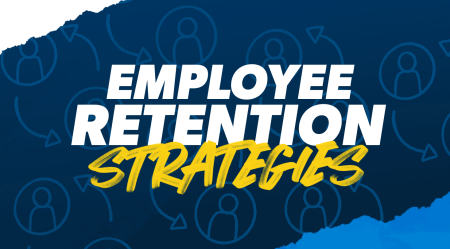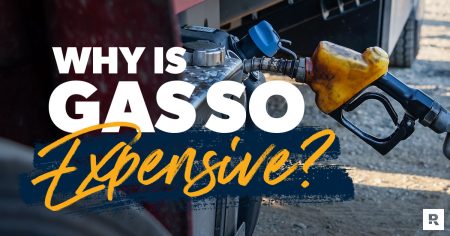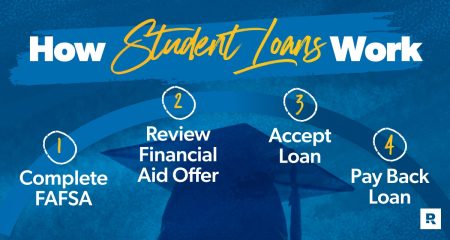An SBA line of credit is a tool that promises a blend of flexibility and affordability and is the hidden gem in the treasure trove of small business financing. If you’re on the lookout for a financial lifeline, read on to discover how to secure this desirable instrument for your business.
About SBA lines of credit
What is an SBA line of credit?
The Small Business Administration (SBA) offers an SBA line of credit through its SBA CAPLines program—a subset of the SBA 7(a) program, which is designed to provide ongoing working capital to small businesses. The SBA offers both revolving and fixed lines of credit options to choose from.
Revolving line of credit
A revolving line of credit works much like a credit card. It offers a source of funds that the borrower can draw from as needed. The main advantage of a revolving line of credit is its flexibility. You can access the funds, repay the amount used, and then draw again, as long as you don’t exceed your credit limit. This type of line of credit is especially useful for businesses with fluctuating cash flow needs.
Fixed line of credit
On the other hand, a fixed line of credit—also known as a traditional or standard line of credit—works differently. Once the funds have been drawn and utilized, they can’t be accessed again, even after repayment. This type of credit is most suitable for businesses with predictable and steady financial needs. It provides a one-time lump sum of money that is repaid over a set term.
SBA loan vs. SBA line of credit
While both SBA loans and SBA lines of credit provide small businesses with the financing they need, they differ significantly in structure and usage. An SBA loan is a lump-sum amount borrowed at one time and repaid in fixed monthly installments, often used for significant, one-time expenses, such as purchasing equipment or real estate.
On the other hand, a line of credit offers more flexibility. It establishes a maximum loan balance and allows businesses to draw funds as needed, making it ideal for managing cash flows or unexpected business expenses. Because of this flexibility, an SBA line of credit often has a slightly higher interest rate than an SBA loan.
Types of SBA CAPLines
SBA offers four types of CAPLines up to $5 million to meet different business needs:
- Seasonal line of credit – This type of line is suitable for businesses that experience seasonal changes in their cash flow, such as retail or tourism businesses.
- Contract line of credit – This type is ideal for businesses that need funds to finance specific contracts or projects.
- Builders’ line of credit – This type is designed for businesses in the construction industry to cover the costs of labor, materials, and other expenses.
- Working capital line of credit – This general-purpose line of credit is built to support ongoing business operations.
SBA Express Line of Credit
In addition to the four types of SBA CAPLines, the Small Business Administration also offers an SBA Express Line of Credit.
This type of funding offers expedited processing times, making it an ideal solution for businesses in need of quick access to capital.
The SBA Express Line of Credit provides a guarantee of 50% on loans up to $500,000, with a maximum term of 10 years.
The key advantage of the SBA Express Line of Credit is its accessibility—with a simplified application process and faster approval times, businesses can have access to the funds they need when they need them.
| Type | Term | Fixed or Revolving |
| Seasonal CAPLine | 10 years | Either |
| Contract CAPLine | 10 years | Either |
| Builders CAPLine | 5 years | Either |
| Working CAPLine | 10 years | Revolving |
| SBA Express Line of Credit | 10 years | Revolving |
SBA 7(a) Working Capital Pilot program
The SBA’s 7(a) Working Capital Pilot program was designed for modern small businesses—offering monitored lines of credit within the 7(a) program.
There are a number of more evolved features that the WCP program adds on top of the existing 7(a) line, including:
- A different fee structure: The fee structure for WCP is modeled after the SBA’s 7(a) Export Working Capital Program (EWCP).
- Support for transaction-based lending and asset-based lending.
- One-on-one counseling with SBA experts.
- The ability to provide working capital for domestic and international orders under a single loan.
To be eligible for the SBA WCP, you’re required to have been in business for at least one year. The maximum loan size is $5,000,000, with maturity up to 60 months. Interest rates for WCP loans are currently the same as the existing 7(a) rates (see below).
As of August 2024, all existing lenders approved to process 7(a) loans were able to begin providing Working Capital Pilot loans as well.
Interest Rates
The interest rates for an SBA line of credit vary but are typically lower than traditional bank loans. The rates are determined by the lender and depend on factors such as the borrower’s credit score, financial history, and the type of line of credit chosen.The interest rate for an SBA line of credit is usually expressed as Prime +.
The “Prime” refers to the current prime rate, which is a benchmark interest rate used by lenders. The “+” indicates a percentage that is added on top of the prime rate. This additional percentage varies depending on the amount of credit line and the lender’s assessment of the borrower’s creditworthiness.
| Line Size | Maximum Variable Rate |
| Up to $50,000 | Prime + 6.5% |
| $50,000 to $250,000 | Prime + 6.0% |
| $250,000 to $350,000 | Prime + 4.5% |
| Greater than $350,000 | Prime + 3.0% |
| Line Size | Maximum Fixed Rate |
| $25,000 or less | Prime +8% |
| $25,000 – $50,000 | Prime +7% |
| $50,000 – $250,000 | Prime +6% |
| Greater than $250,000 | Prime +5% |
Terms
The terms for SBA CAPLines also vary, with a maximum repayment period of up to 10 years.
However, there’s an exception for the builder’s line of credit. This specific CAPLine has a maximum repayment period of up to five years, or the time it takes to complete the construction or renovation project, whichever is less. This exception is designed to match the repayment period with the completion of the project, ensuring that businesses are not overburdened with repayments post-project completion.
SBA line of credit requirements
To qualify for an SBA line of credit, businesses must meet certain eligibility criteria, such as:
- Being a small business located in the United States
- Having good personal and business credit scores
- Being able to demonstrate the ability to repay the loan
While the general eligibility criteria apply to all SBA CAPLines, there are some specific qualifications depending on the type of CAPLine:
- Seasonal CAPLine – To qualify, businesses should demonstrate a definite pattern of seasonal activity, with an operating cycle of not more than 12 months. The business should also have been in operation for at least one year.
- Contract CAPLine – To be eligible, businesses must have specific contracts or orders that the funds will be used for. The repayment comes from the contract’s proceeds.
- Builders CAPLine – This CAPLine requires businesses to be involved in building or renovating commercial or residential buildings. The repayment comes from the conversion of construction loans into long-term financing or the sale of the residential or commercial property.
- Working CAPLine – Businesses must have inventory or accounts receivable.
For all CAPLines, you’ll need to provide collateral that can be liquidated by the lender if the loan is not repaid. The collateral requirements may differ based on the specific CAPLine, the amount borrowed, and the lender’s policies. Remember that every lender may have slightly different criteria for qualifying businesses, so you should always speak to your lender to understand the specific requirements.
How to apply for an SBA line of credit.
Applying for an SBA line of credit is similar to applying for any other loan. The first step is to find a lender that offers SBA CAPLines and meet their eligibility criteria.
Once you have found a suitable lender, you will need to gather the necessary documents, such as financial statements, tax returns, and business plans. You may also need to provide collateral for the line of credit.
After submitting your application and supporting documents, the lender will review your application and make a decision. If approved, you can start using your line of credit to support your business’ ongoing needs.
Conclusion
In conclusion, an SBA line of credit can be a valuable tool for small businesses looking for flexible and affordable financing options. With various types of CAPLines available and competitive interest rates, it is worth exploring as a potential funding source for your business. Learn more about SBA loans.
Quickly compare loan offers from multiple lenders.
Applying is free and won’t impact your credit.
Information provided on this blog is for educational purposes only, and is not intended to be business, legal, tax, or accounting advice. The views and opinions expressed in this blog are those of the authors and do not necessarily reflect the official policy or position of Lendio. While Lendio strives to keep its content up-to-date, it is only accurate as of the date posted. Offers or trends may expire, or may no longer be relevant.
Read the full article here












